A Japan Rail Pass (commonly known as a JR Pass) is a popular all-you-can-ride ticket for travel on Japan Rail national trains including the country’s famous Shinkansen (bullet trains). However, these passes are expensive and even set to increase in price in April. If you are going on a trip to the Land of the Rising Sun, you might be wondering if the Japan Rail Pass is worth shelling out for. So, is the Japan Rail Pass worth it? We ran a case study earlier this year to find out.
I bought a three-week “ordinary” pass for 66,200 yen (an equivalent of $504.5 on the day I picked it up). A green car “first class” pass is also available, but the regular seats on most Japanese trains have more leg room than most domestic first-class US flights so I can’t imagine who would spring for one. You can also buy a Japan Rail pass for 14 days or for seven days instead of 21 days.
You can make a reservation ahead of time and pick up your JR Pass at the airport. As Japan continues to see its tourism numbers rise after its long-overdue COVID reopening, the lines for buying and picking up passes at Narita Airport are quite long, so be sure to build in plenty of time. Also, JR Passes are only available to tourists on a short-term stay visa, so ensure that border control puts the correct stamp in your passport when you arrive or you won’t be granted yours.
Japan Rail Pass cost breakdown calculator: Is the JR Pass worth it?
To start our trip in Japan, we flew into Narita Airport. From here, you can take a number of transportation methods to get to Tokyo, but if you’ve got the JR Pass, the best option is the Narita Express, which the pass covers. Reservations for the Narita Express are required but you can make one at the Narita Airport JR office while picking up your JR Pass.
My first use of my JR Pass was on the Narita Express from the airport into Tokyo, which would have cost 3,070 yen otherwise.
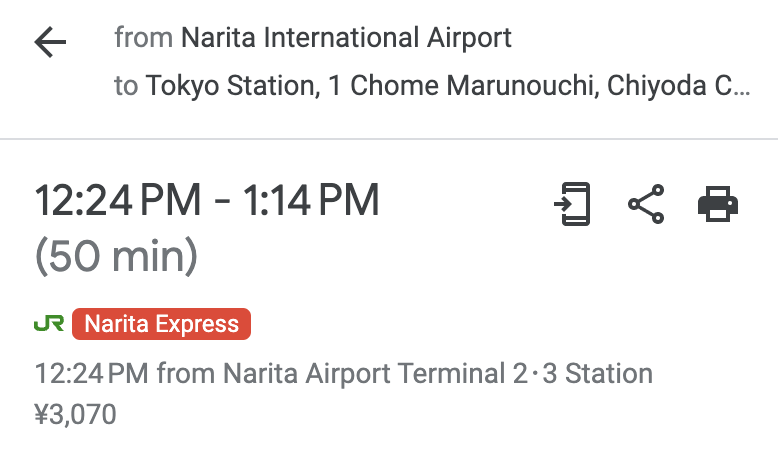
From Tokyo Station, we chose to take the subway to get to our hotel – the ever-wonderful, tiny, Superhotel Premier Ginza (more on that in a future post). The only Tokyo subway line covered by the JR Pass is the Yurachko line, which runs around the city in a circle. As a result of its shape, it’s rarely the most convenient option to get somewhere directly, but once in a while it works out. For this one-stop ride, we saved 140 yen with the pass. Not a lot, I know, but we’re keeping track of everything here!
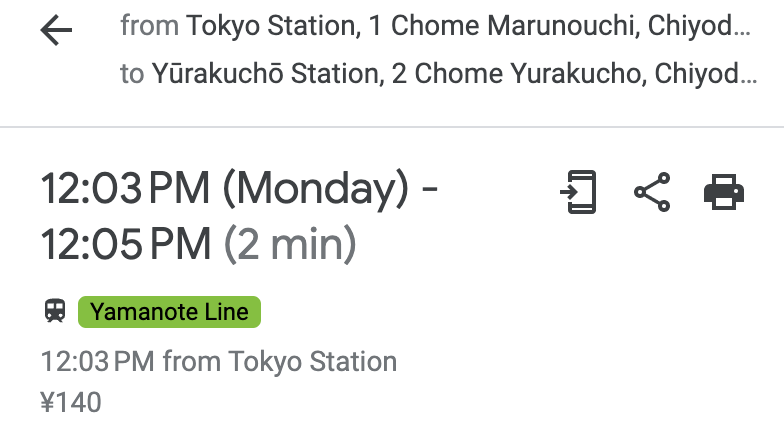
We stayed in Tokyo for about a week and although we rode the subway plenty during that time, there was not an opportunity to use our JR Pass.
When the weekend came, we headed out of the city to Ito, a small seaside town about a 90-minute ride southwest of Tokyo. It was our first voyage on a Shinkansen, which everyone should take at least once in Japan. We grabbed some Tokyo Banana at the station and then were on the way. There was a transfer in the city of Atami to another JR line and the whole journey cost 4,600 yen.
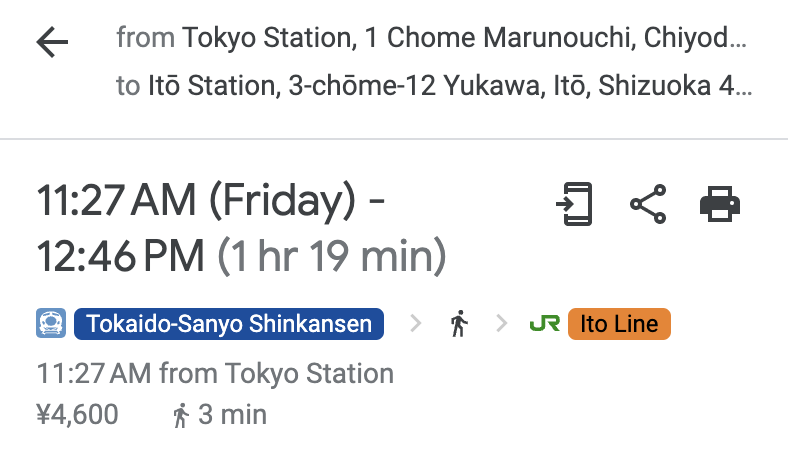
After a long weekend in Ito, we headed to Hakone to stay at a ryokan in the mountains. This required a JR local train with a transfer to a Shinkansen for one short stop and then a bus. While this particular bus was not covered by the JR Pass, both of the train lines were, and the total cost of the trains would have been 2,970 yen.
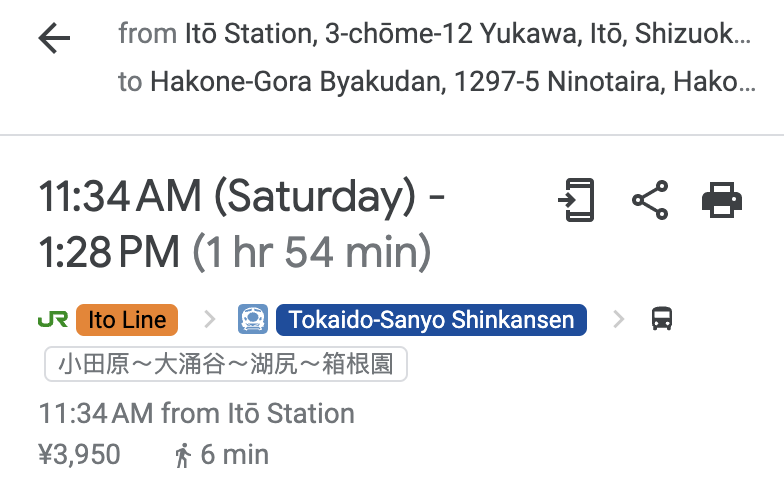
We soaked in the onsens of Hakone to our hearts’ content, had some amazing food at the ryokan. After our ryokan stay, we went back to Ito, which we’d found charming and quiet. This time around, we found a direct train, the JR Odoriko line, which cost 1,440 yen from Odowara.
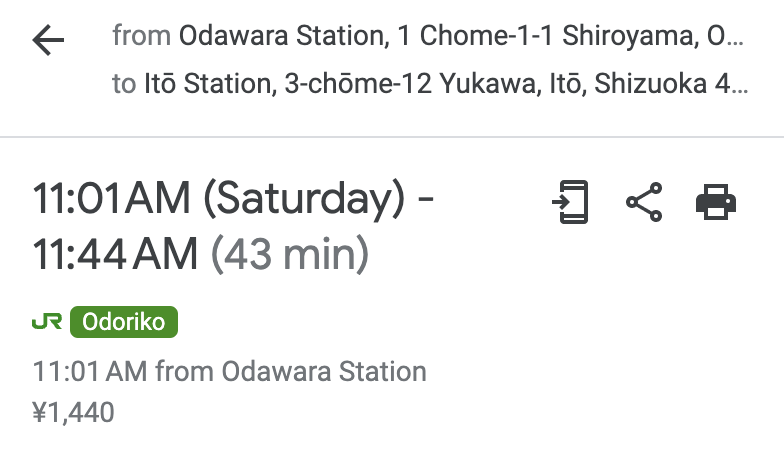
From Ito, we went back to Tokyo, and instead of the Shinkansen option, we took a direct train, the Odoriko line again. This would have cost 3,890 yen without the use of the JR Pass.
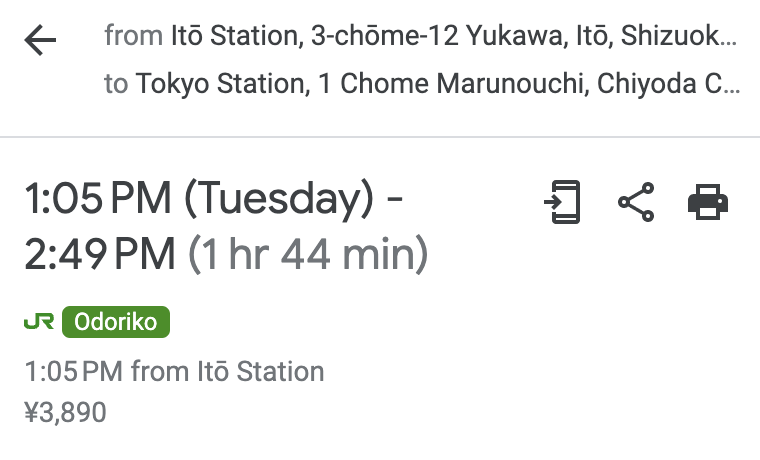
Once back in Tokyo, I rode the Narita Express back to the airport to pick up my mom. Although I used my JR pass on the way there, which saved another 3,070 yen, the timing didn’t work out on the way back (the Narita Express trains aren’t that frequent). We had a sushi restaurant reservation to get to and so we paid out of pocket for the Keisei Skyliner, a rail line owned by another company.
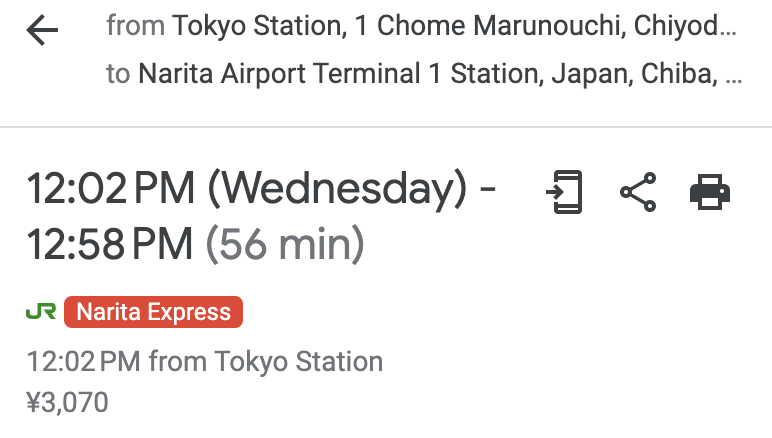
A few days later, we went to Toba, another seaside town, this time in Mie Prefecture. This required another Shinkansen ride to Nagoya and then a transfer to the JR rapid Mie line. The total cost would have been 13,670 yen, quite the chunk of change for a train ride. This was the most expensive ride of our trip.
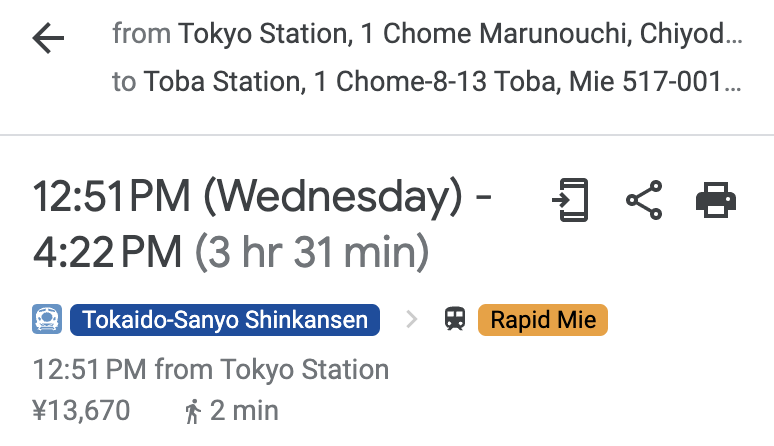
From Toba, we traveled to Yunomine Onsen, a hot springs resort town nestled in the hills, which is where we began the Kumano Kodo. As with going to Hakone, this route required a bus, which we picked up at Shingu Station. The bus cost wasn’t covered, so the screenshot below just includes the train travel to Shingu, which cost 6,000 yen.
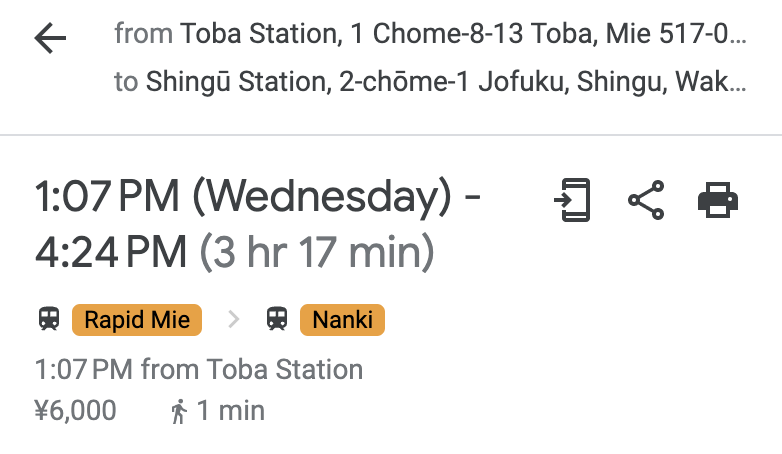
We finished the section of the Kumano Koto trail at Kii-Katsuraa, a town known for hot springs and tuna. From there, we rode a train along the coast of the Kii Peninsula, touching the southern-most point of Honshu, and arrived in Osaka, about four hours later. The cost of the direct train would have been 7,020 yen.

Our pass expired the next day, and are you ready for the roundup? Have you done some rough math in your head? What do you think – was the Japan Rail Pass worth it for us?
All the train rides we took would have cost 45,910 yen if we’d bought them one by one and we would have saved 20,290 yen (equivalent to $148.5 the day we flew out of Japan) had we not bought the JR Pass.
The mistake we made with our JR Pass
Having the flexibility of the JR Pass to go anywhere in the country made us feel like the world was at our fingertips. We should have bought a 7-day pass or a 14-day pass, rather than a 21-day pass, because there was almost a full week in Tokyo where we didn’t use it. Or, we should have ridden more Shinkansen trains, which are more expensive than their limited express counterparts.
For us, the Japan Rail Pass was not worth it, but that’s not to say that this is the case for everyone. Hopefully, our Japan rail pass calculator was helpful in making your own decisions. If you are planning to visit locations further afield, such as Fukuoka or Sapporo, where trains are more expensive, a pass would definitely be worth looking into.
While you can save money with a Japan Rail Pass, there’s no way around the fact that a trip to Japan can be expensive anyway. We brought down the cost of the trip by transferring points earned from the Chase Sapphire Preferred card to hotel and airline partners. Once you hit the spend limit, they’ll hook you up with a 75,000-point bonus which will serve as a fantastic starting point (no pun intended) for a trip to Japan.
Have you bought a JR Pass in Tokyo? Did you enjoy our Japan Rail Pass calculator? What’s your favorite part of riding a Shinkansen train? Let us know in the comments!

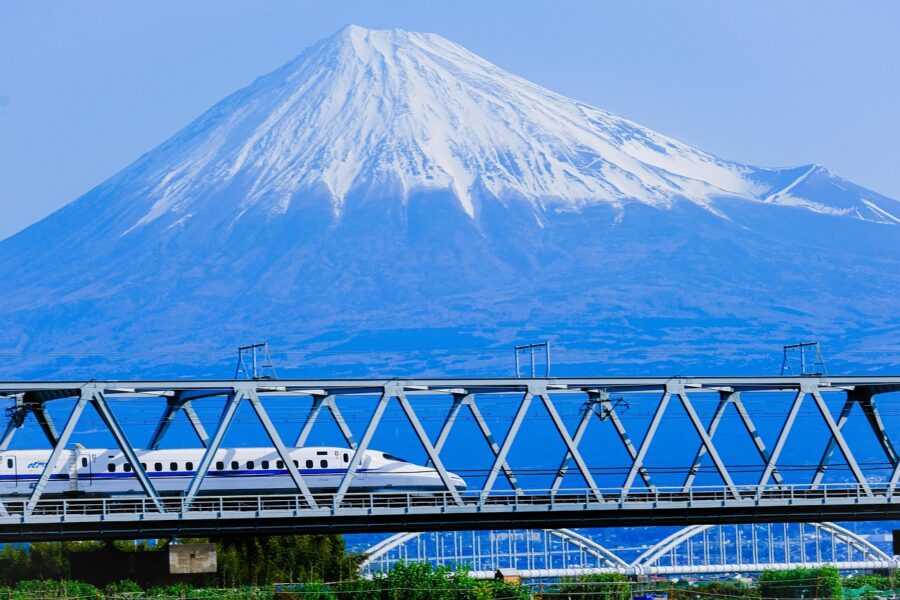
Pingback: My mission to save $100,000 on my honeymoon with points and miles – Part TWo: Flights - The Veteran Voyager